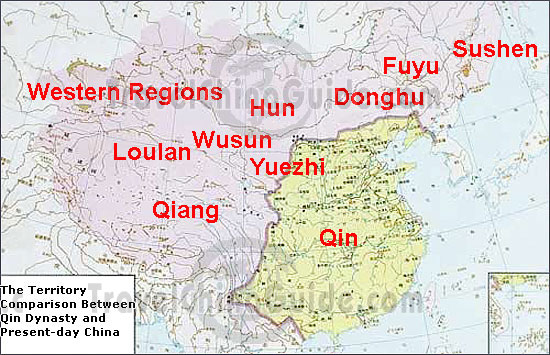The First Emperors
The first emperors of both the Qin and Sui dynasties successfully unified China after periods of division and turmoil. Qin Shi Huang, the first emperor of the Qin dynasty, overcame the competing warring states that had existed for centuries prior. Similarly, Sui Wendi brought an end to the fragmented kingdoms that had emerged following the collapse of the Han dynasty. Both emperors established institutions and policies aimed at centralizing control. The Qin standardized currency, measurements, and even imposed a uniform script across China. These lasting administrative reforms helped lay the foundation for future imperial rule. Sui Wendi also implemented regulations to promote cross-regional harmony and prosperity within the newly restored empire. Under his capable leadership, national storehouses were filled to the brim and the people lived comfortably.
Merit-Based Governance
An important part of centralized rule was establishing a system of governance based on merit rather than hereditary status. Previously, only those from aristocratic families could hold positions of power and authority. However, the Qin and later Han dynasties began selecting officials through an impartial civil service examination. While wealth and family connections still provided advantages, this opened opportunities for talented individuals from more common backgrounds. Sui Wendi continued promoting merit-based appointments to key government posts.

Decline and Downfall
Costly Grand Projects
Unfortunately, the success of the early Qin and Sui emperors did not last. In both cases, ruin was brought about by the actions of their successors. For the Qin, Emperor Qin Shi Huang’s megalomania and oppressive reign sowed deep resentment among the populace. When he passed away, rebellions erupted that led to dynastic collapse just a few short years later. For the Sui, it was the misguided rule of Emperor Sui Yangdi that doomed the dynasty. Obsessed with leaving a grand legacy, he undertook enormously costly construction projects like building a new capital city and expanding the Grand Canal. Millions of conscripts were required each month to complete this work, straining Sui resources to the breaking point. Yangdi also launched repeated military campaigns against Goguryeo in Korea that drained the empire of vital manpower and supplies.
Popular Discontent and Rebellion
The heavy taxes and corvée labor imposed to fund these royal vanity projects created widespread popular discontent. Combined with natural disasters like drought and famine during this period, resentment grew rapidly among the common people and elites alike. For both the Qin and Sui, this provided fertile ground for rebellions to take root and overthrow the ruling house. In 221 BC, peasant risings erupted following the Qin emperor’s death that destroyed the fledgling Qin state. Similarly, disaffected Sui subjects rose up in the 610s AD, culminating in Yangdi’s assassination in 618 and the collapse of imperial authority.
Lessons of Impermanence
The Qin and Sui dynasties, though both achieving initial unification and prosperity, illustrate the impermanence of imperial rule. While capable first emperors like Qin Shi Huang and Sui Wendi saw early successes, misguided successors squandered these gains. Costly ego projects, wars of vanity, and failure to address popular grievances turned the people against their once respected ruling houses. In both cases, their legacies were eclipsed by successor dynasties, the Han and Tang, which proved longer-lasting through moderate, pragmatic governance focused on stability and economic development over grandiose building schemes. The brief spans of the Qin and Sui serve as lessons in how easily the fruits of empire can be lost by ignorant or oppressive leadership.

 Les Colombiennes comme conjointes potentielles - Regards croisés
Les Colombiennes comme conjointes potentielles - Regards croisés/Philadelphia-CIty-Hall-Eric-Bowers-Getty-Images-5906abd55f9b5810dcb997bd.jpg)